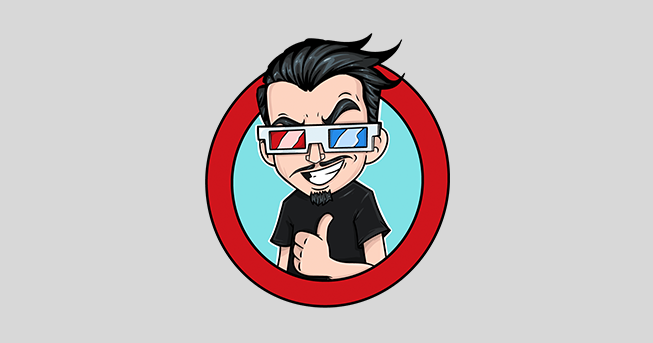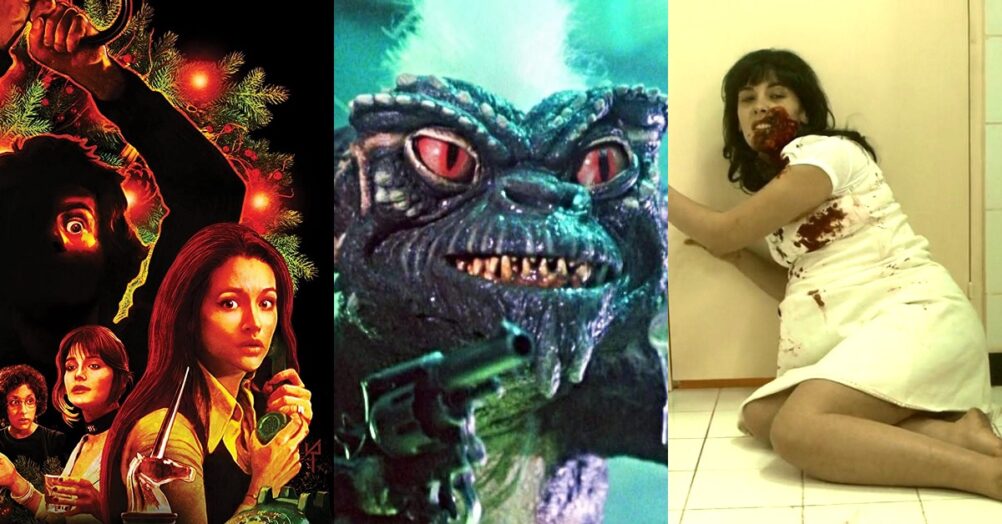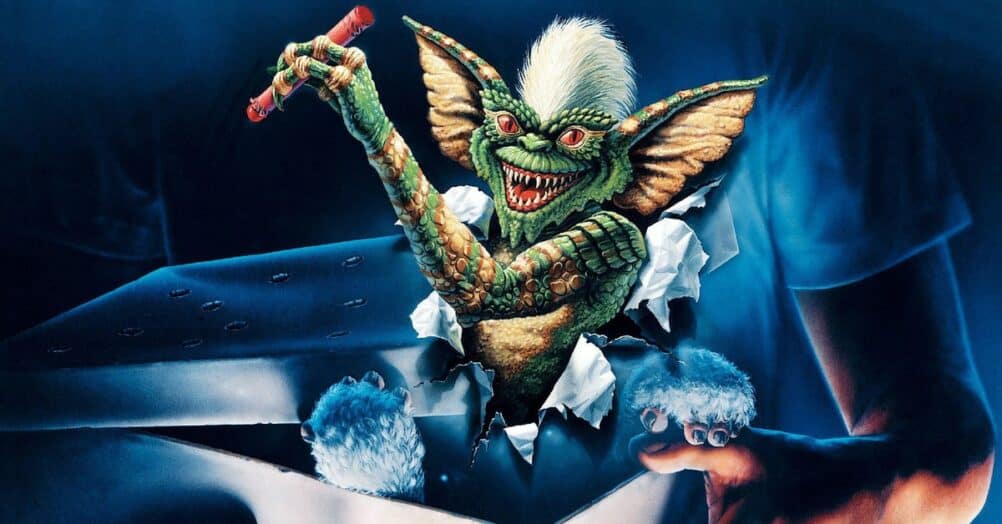Last Updated on November 30, 2024

And the JoBlo.com/AITH excursion on THE EXORCISM OF EMILY ROSE set continues with Part 2 of the set visit (read Part 1 here). The capper of my adventure was an engaging Press Conference with Cast and Crew. Yes, I got to be five meters away from the captivating Laura Linney! Beauty, humor and intelligence! The ideal woman! Marriage crossed my mind! Marriage, kids and bondage…oops sorry….I’m getting off track here.
So without further ado, give a big JoBlo.com welcome to: Laura Linney (actress), Scott Derrickson (Director/screenwriter and yes he directed the badass Hellraiser inferno), Tom Wilkinson (actor), Paul Harris Boardman (screenwriter) and Campbell Scott (actor and great man) You’ve got the floor, mates!

JOURNALISTS VS. CAST AND CREW
For the actors; were you familiar with the story underlining this? Did you do any research into the true story?
Laura Linney: Um, no, I knew nothing about it. Um, and while it is… There is a…a similar story that it is based on, but it is not a recreation of that story, so there…there is a book that was written about the events and I did read that, um, and then just talked to Scott a lot.
Scott Derrikson: I filled her in.
This question is for Tom Wilkinson. You probably have the most to do with the horror element in the film. How was it working within that, did you do a lot of research and what attracted you to the role?
Tom Wilkinson: Almost everything I ever do in a film I haven’t ever done before. As far as research is concerned, I didn’t do any. I mean if I can possibly ever not do any research I won’t. What was interesting about this for my character is that it’s the first time it’s happened to him, the first exorcism that he’s been involved with, so I thought it would be quite interesting if you could just do it from the same angle where both my character and I were kind of beginners.You allow the events to sort of happen to you in a certain sense rather than controlling them, like an expert might have done. So I welcomed the idea of doing something that I had never done before.
My question is for Scott. I saw THE EXORCIST in the seventies when I was very young and it really scared me, and when I saw it again in the re-release the whole audience was laughing at parts that should be scary. Since this genre has been spoofed so much, how did you approach writing the script and how are you approaching the direction of it?
Scott Derrikson: I saw the, the same re-release and had a different experience. I mean the audience I saw it with liked it quite a bit and I am a big fan of that picture. But if you’re going to make an exorcism movie of any kind, you know, you certainly have a certain burden or hurdle — hurdle to get over with, with that film. And, and for me — I think if I understand your question you’re asking how did I sort of treat that…
Did you see that as a challenge? Were you excited about it?
Scott Derrikson: The subject matter is profoundly compelling and I think that what everybody knows is that it is a real phenomenon out in the world whether you believe there’s anything spiritual to it or not. It happens. People get exorcisms. And, and there are lots of stories of lots of cases and that fact alone makes it interesting. And what I wanted to do was approach the subject matter in a less exploitive way. You can’t out-exorcist THE EXORCIST so you sort of have to almost go under it in a sense. I certainly want the film to be scary and I want it to be compelling to watch, but in some ways, I think to really frighten a contemporary audience you just can’t do that with special effects, sound, camera tricks and sort of the manipulative tricks of the trade that were implemented there.
They were extraordinary at the time but that same sort of approach has been used in a million different horror films since. And so I think that with this one certainly my intention — we’ll see if, if we pulled it off — but certainly my intention was for the effectiveness of the sort of horror elements and the exorcism itself to be rooted in the reality of these real characters portrayed by great actors and for the phenomenon that you watch to be very counter intuitive but not over the top. And, and for me the result is that it’s effective and it’s really frightening and it really puts your head in a space of thinking about whether or not you believe that this sort of thing can happen. So I think what we’re trying to do is make a movie that’s a little bit more of an exploration of what does it really look like and what, what’s the range of possibilities there and what can it mean? And that’s, that’s what we’re trying to do.

For Tom Wilkinson. How do you feel about the decision that your character makes to perform an exorcism on the girl? What motivates him and what scares him, and how would you personally feel about it if you had been put in a similar position?
TW: Big question, isn’t it? Well I’m very glad that he does decide to do it, otherwise I wouldn’t be in the movie. (LAUGHTER) I’d be passing by the window on a bicycle. What is interesting about priests when they take on an exorcism is that they are not there personally. They are there as a kind of embodiment of the Catholic Church. It’s a Catholic priest who’s doing it. So they have to be shriven, they have to have gone to confession.
They have to have fasted. They have to be in a state of grace, I’m told, so that they become merely a conduit. They themselves are not there to sort of grapple hand-to-hand with the demons, but to act as a conduit from God through the Catholic Church into the body and soul of the person who’s possessed, and that’s how that works. So in a certain sense his private feelings are kind of irrelevant. And that’s the best answer I can come up with.
This question is for Campbell. Tell us about your character and how do you come up with the look? You’re usually a stud and this is more of an aged look.
Campbell Scott: (LAUGHS) Holy moly. Um, thank you for half of that question.
Laura Linney: I think he’s one of the handsomest men I know.
Campbell Scott: Yeah, it’s been a long time since I’ve been the young, uh, whatever you said, but, but thanks anyway for remembering. How did I come up with the look? I don’t know. I always try to come up with some kind of look that’s going to be different from the last look, to tell you the truth. And his is my real hair and my real mustache and my real color which you often see removed for other jobs. I play Ethan Thomas, who’s the prosecuting attorney. I’m acting on behalf of “The People” in the film and he’s a very kind of no-nonsense, intense, character who does not obviously believe in this type of spirituality but does believe that this young woman was harmed by the neglect of this priest.
He probably doesn’t really go for Catholicism. He’s a very intense Methodist in the movie. And Paul and Scott have made a very light but nice , point of, of saying that he is in fact not just a factual guy, he’s a religious guy, but he’s a different kind of religious guy. And I don’t know, the look just seemed right. Personally my looks are always based on two things: what’s going to be different from the way people have seen me before — ’cause I find that interesting — and also what’s going to work for the guys.
My question is for Scott. Given your previous credits for doing films like Urban Legend 2 and all these sequels, how do you make the transition ….
Scott Derrikson: Write a good script.. We wrote the script and developed it outside the studio system. I think a lot of it had to do with the fact that the script wasn’t a studio concept before it became a screenplay. We, we wrote it pretty much on our own and did it the way we wanted to do it, and then it just found the right home. Screen Gems and Lakeshore just understood it. And there was a lot of interest around the project as soon as it became kind of available to the studios and we ended up here because we felt like that was a place where they were going to let us make it the way that it was.
It’s very satisfying, because I love the genre and this isn’t even really purely a horror film. It’s a courtroom movie as well and it’s got very dramatic characters and I certainly don’t have anything but really positive feelings about the horror genre in general. But I do think that there are sort of two tiers to it, you know and this one’s is sort of going to that second tier which is great. And so far that’s the movie we’ve been shooting.

So the other films you’ve done didn’t quite get there, are you saying?
Scott Derrikson: They were both sequels and they were movies that were green-lit before there was ever a script. Whenever that’s the case they are constraints and limitations and we’re there to serve a very narrow purpose. In the case of URBAN LEGENDS there were a lot of producers and there was a lot of different input. I think that project belongs to a lot of different people, you and whenever that happens you end up with something that sort of can lose its way a bit. But I think that didn’t happen on this at all and I’m very happy to have worked on those other films. It was a great place to start.
Laura, what was it about the project that appealed to you? Did you have to think twice before accepting it?
Laura Linney: There were things about the script that interested me that have nothing to do with horror or with typical horror. The whole idea of people’s personal demons, whether you’re religious or not, whether that’s depression or anxiety or stress or whatever, interested me, and there’s a line in the script that deals with that, and I found it found really interesting. I had very long talks with Scott. I had very long talks with Clint Culpepper, one of our producers, just to see where they were and what they were thinking and what kind of movie they wanted to make. And was this something that I thought I could contribute to in a positive way? And would I have a good time making it? So yeah, I was thoughtful about it, definitely.
Was there any one thing that finally convinced you to do it?
Laura Linney: Scott and his sincerity about wanting to make a good movie and wanting to be true to the story first. That went a long way.
This question is for Scott. It’s my understanding that you’re playing the film in an ambiguous way where you’re letting the audience figure out is she really possessed or is she not?Do you find yourself having to self-censor yourself visually when you’re filming the exorcism scenes because you don’t want to make them too horrific and imply to the audience that she is possessed ….?
Scott D: Yeah, it’s a real tightrope walk, a balancing act and I don’t know how well we’ve achieved that. I do know that it hasn’t been terribly difficult where I haven’t been distracted by it because there was so much rigor put into that in the screenplay. And I think that our actress Jennifer Carpenter who plays Emily Rose is so extraordinary in the role that actually took a lot of that weight off of me. I really reconceived how to do the entire movie at her call back audition because she was so frightening– it was so surreal, just her in a room full of guys behind a desk. And what she was doing was so counter intuitive to watch — what she can do with her body and the realism to it. I had this terrible sense of gosh, how am I going to make these possession and exorcism scenes frightening, you know? What camera tricks can I use? How far can I go? And then when I saw her I was like “Well, you’ve just got to turn the camera on and point it at her.” And when she is doing things that are more representative of mental illness, something that’s not so supernatural it’s equally disturbing. I think that’s one of the things that’s interesting about it. So she took a lot of the burden off me in that, in that respect.
From a story point of view there is a good amount of paranormal things, so you’re always trying to remember who’s telling this story and of course in that respect it was very influenced by RASHOMON. When there’s a same event that really is being remembered in different ways or being thought of as different realities, it’s incredibly interesting because memory does warp history in some regard. So you get a certain range of freedom when you’re telling a story like that because you can go a certain distance and think boy we’re really making this look supernatural and this is supernatural, but then you’re remembering “Oh, but that’s the priest telling his version, as opposed to someone else who’s talking about the same situation from a much more skeptical point of view.” That’s what’s fun about it and somewhere in the heart of that is what the movie is about. It certainly is for me.

How did this film affect your own spiritual beliefs. Do your spiritual beliefs change as you’re working on any film?
Campbell Scott: Yeah, I would think that happens. We wouldn’t often admit it but I would conjecture that that’s part of the reason — those of us who are actors — became actors in the first place. There’s something about… not necessarily changing outwardly, but there’s something about learning about something that you– someone’s point of view, that you would have never considered before, whether you’re playing a military person or a priest or a lawyer etc…I mean to me this is the attraction, because suddenly instead of immediate labeling, which we’re all very fond of because it cuts the fear down, you’re suddenly looking at someone/something from someone else’s– literally walking in their shoes. Now, you know, we joke around all day. It’s an exorcist movie. Do we really believe this stuff?
No, late at night is probably when we really think about what you’re asking about, and personally I think those things change as your life goes on too. There have been points of my life where I might be much more open to the kinds of things that we’re talking about, whereas another part of my life I might be much more solid and think no, no, no, I don’t believe in that. It just depends on your track. But the cool thing about being an actor is that when you get a job you get to go and spend one or two months or whatever finding that out, and usually nobody gets hurt which is a very satisfying way to live. Not always. I mean solving those problems can be very frustrating and piss you off or whatever, you know, or scare you. But most of the time it’s very, it’s very rewarding.
The question is for Scott. Who is actually doing the effects and what kind of budget do you have?
Scott Derrikson: Captive Audience are doing the effects. There were two reasons why I really chose Captive Audience. One) they did the effects on THE PASSION OF THE CHRIST. They did both makeup and digital effects and so much of that was dealing with the human body, and there was a seamlessness I thought to a lot of the effects in that in terms of both makeup– the blending of makeup effects and digital effects and there was a realism to it that I thought was very effective.
They were also the, the company that I think best understood the aesthetic of the movie and they seemed really excited about making something that was intelligent. They recognized that it was very important, given the quality of the actress that they would be mostly working with in Jennifer, to stay out of her way and rely on her performance, let her performance be what it is, and only enhance it rather than distract from it. They’ve really been getting underway I’ve been really happy with them so far.

This is for you, Scott. Other than musicals, horror films have probably created the most rabid expectations. … How do you view the genre in its current state, and where do you think you’re contributing to it?
Scott Derrikson: That’s an excellent question. I know exactly what you’re talking about. I’ve been to all of these websites at some point, so none of your names are surprising me. Horror fans are rabid fans. The greatest misconception about horror fans is that they just love gore but they also really love cinema, this kind of cinema and they love the things that horror cinema can do that they can’t get anywhere else, not in horror novels, not in graphic novels, not in anything else. And, um, I think…. what was the second part of your question?
I was just asking you about the current state …?
Scott Derrikson: Well, I think that it’s a very exciting time to be working with this genre because it’s beginning to branch out where it belongs. I really think that this is a genre that historically hasn’t gotten the respect that it deserves. I don’t know how else to put it. I mean in cinema.
But if you look back at the rest of history, literary history and history of the theater… the macabre, the horrific and the gothic are things that were so integral in all of the great arts. The cathedrals have gargoyles on them in Europe. The churches nowadays don’t have horrific things in them like they did back then. I think that there’s something about cinema this century as it went on and special effects developed. it sort of began to pander I think a little bit to the lower common denominator. And it’s almost like now people are realizing wow, you can really branch out with this genre. You can really get into ideas and you can really get into characters and get into situations that are as provocative as anything you’re going to find in any movie.
Whether it’s THE OTHERS or THE SIXTH SENSE or THE RING, you know, these are all movies that I think started to open up the possibilities of the genre. And I think that you can even be more frightening and still have great characters. And the seventies gave the promise of that with ROSEMARY’S BABY and THE OMEN, and those are my favorite horror films and THE EXORCIST. I’d love to think that this is going to fall in that line, but, you know, that would be presumptuous to think that until it’s done.

And that’s that on that! I’d like to thank the uber cute Amy Conley at Sony, the kool journalists who hung out with me and the classy people on set for making my foray a good one!




















Follow the JOBLO MOVIE NETWORK
Follow us on YOUTUBE
Follow ARROW IN THE HEAD
Follow AITH on YOUTUBE